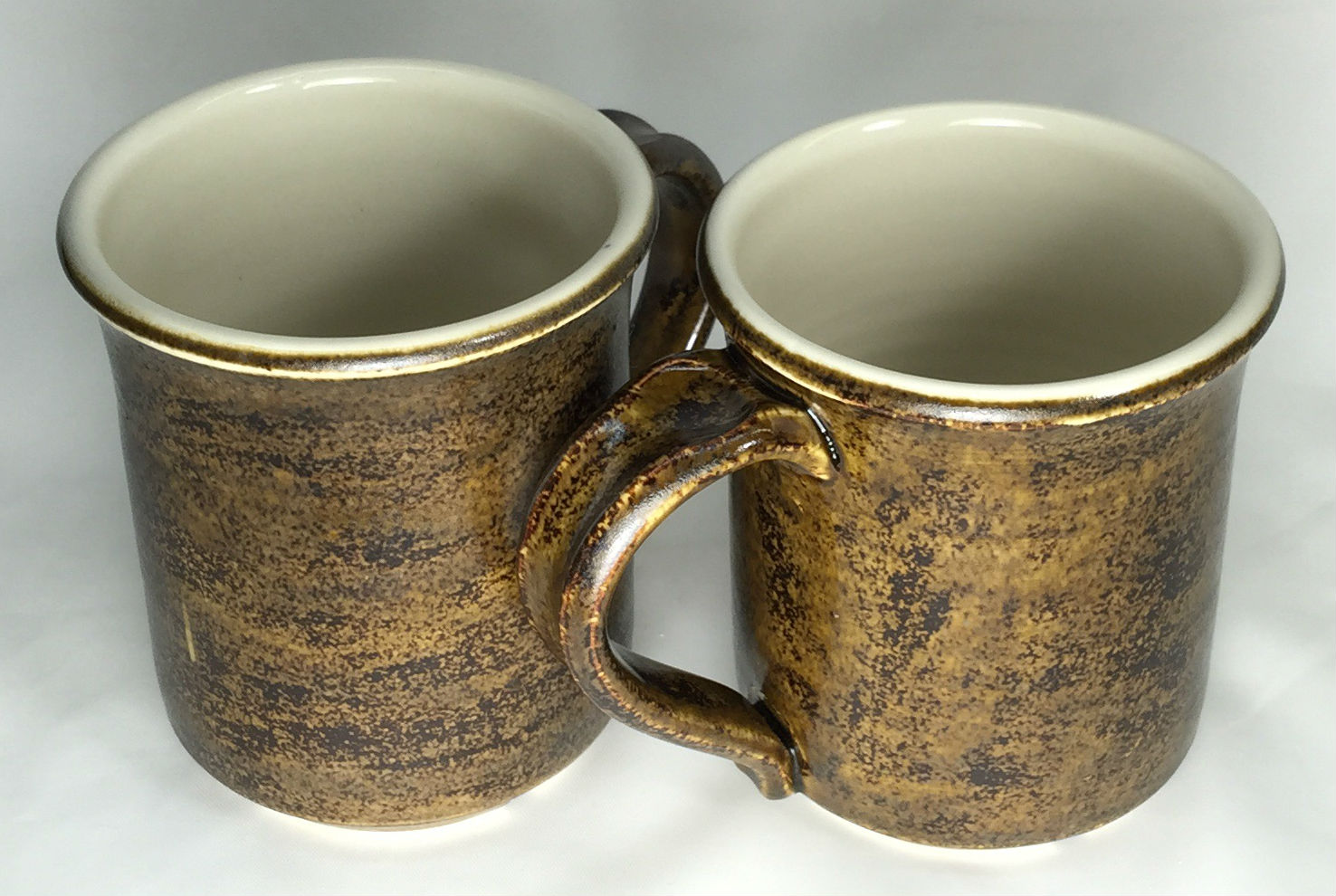| Monthly Tech-Tip | No tracking! No ads! |
Commercial supposedly safe glazes leaching. A liner glaze is needed.
Three cone 6 commercial bottled glazes have been layered. The mug was filled with lemon juice overnight. The white areas indicate leaching has occurred! Why? Glazes need high melt fluidity to produce reactive surfaces like this. While such normally tend to leach metals, supposedly the manufacturers were able to tune the chemistry enough to pass tests. But the overlaps interact, like drug interactions they are new chemistries. Cobalt is clearly leaching. What else? We do not know, these recipes are secret. It is better to make your own transparent or white liner glaze (either as a dipping glaze or brushing glaze). Better to know the recipe to have assurance of adherence to basic recipe limits.
Are commercial glazes really guaranteed food safe? When manufacturers claim adherence to standards like ASTM D-4236 what are they saying? The small amounts of liquid glazes are safe for the artist to brush on. They are not making claims about leaching on finish ware.
Related Pictures
Commercial glazes on decorative surfaces, your own on food surfaces

This picture has its own page with more detail, click here to see it.
These cone 6 porcelain mugs are hybrid. Three coats of a commercial glaze painted on the outside (Amaco PC-30) and my own liner glaze, G2926B, poured in and out on the inside. When commercial glazes (made by one company) fit a stoneware or porcelain (made by another company) it is by accident, neither company designed for the other! For inside food surfaces make or mix a liner glaze already proven to fit your clay body, one that sanity-checks well (as a dipping glaze or a brushing glaze). In your own recipes you can use quality materials that you know deliver no toxic compounds to the glass and that are proportioned to deliver a balanced chemistry. Read and watch our liner glazing step-by-step and liner glazing video for details on how to make glazes meet at the rim like this.
Videos
Links
| Glossary |
Leaching
Ceramic glazes can leach heavy metals into food and drink. This subject is not complex, there are many things anyone can do to deal with this issue |
| Glossary |
Functional
A term used in ceramic to express the degree to which an item is safe and stands up to everyday use. Functionality embodies strength, hardness, resistance to acid attack and thermal shock, etc. |
| Glossary |
Food Safe
Be skeptical of claims of food safety from potters who cannot explain or demonstrate why. Investigate the basis of manufacturer claims and labelling and the actual use to which their products are put. |
| Glossary |
Commercial hobby brushing glazes
These are an incredible benefit to pottery beginners and pure hobbyists. But they can also be an obstacle to progress and affordability as your skills improve. |
| Glossary |
Liner Glaze
Liner-glazing is a way to assure that your ware has a durable and leach resistant surface. It also signals to customers that you care about this. |
| Tests |
Glaze Leaching Test
Simple tests to evaluate the stability of a ceramic or pottery glaze against leaching metals in food or drink. |
| URLs |
https://www.astm.org/d4236-94r21.html
ASTM D-4236 - Standard Practice for Labeling Art Materials for Chronic Health Hazards - It is not what you think! A standard that "applies exclusively to art materials packaged in sizes intended for individual users of any age or those participating in a small group". It "concerns those chronic health hazards known to be associated with a product or product component(s) when it is present in a physical form, volume, or concentration that in the opinion of a toxicologist has the potential to produce a chronic adverse health effect". The word "toxicity" is not mentioned on the page nor any methods for determining such. Furthermore, the labelling refers to hazards to which the potter is exposed in applying the glaze to the ware, long term, in small hobby quantities. IT DOES NOT ADDRESS leaching hazards the ware presents to users of the pottery. Even then, the standard states that "it is the RESPONSIBILITY OF THE USER ... to establish appropriate safety, health, and environmental practices ... based upon knowledge that exists in the scientific and medical communities". It also admits that "since knowledge about chronic health hazards is incomplete and warnings cannot cover all uses of any product, it is not possible for precautionary labelling to ensure completely safe use of an art product." It is interesting that one manufacturer displays this warning on pages relating to dipping glazes and accessory products (which are used by manufacturers): "Safety Warning: Tableware producers must test all finished ware to establish dinnerware status, due to possible variations in firing temperature and contamination." This warning does not appear on brushing glazes, even the reactive metal-saturated ones that potters and hobbyists use! |
| Articles |
Where do I start in understanding glazes?
Break your addiction to online recipes that don't work or bottled expensive glazes that you could DIY. Learn why glazes fire as they do. Why each material is used. How to create perfect dipping and brushing properties. Even some chemistry. |
Got a Question?
Buy me a coffee and we can talk

https://digitalfire.com, All Rights Reserved
Privacy Policy

